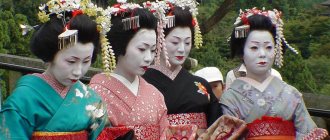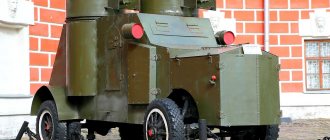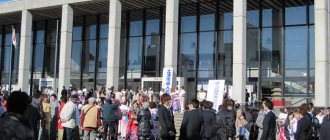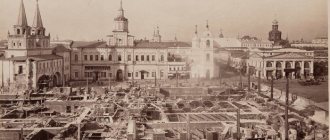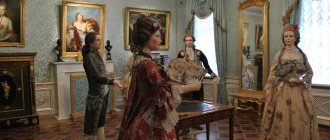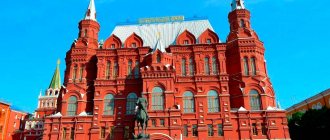State Foundation Day in Japan
The Day of the Foundation of the State is a holiday that appeared in the calendar of the Land of the Rising Sun in 1873.
It was established by Emperor Meiji in order to show the inhabitants that the times of the Tokugawa shogunate had sunk into oblivion, and they now live in a united empire. February 11 was chosen as the date of the holiday. It was on this day that the Japanese used to celebrate the new year. In addition, according to legend, on the first day of 660 BC, Jimmu became the ruler of the country, who laid the foundation for the dynasty of Japanese emperors. Now it is no longer possible to establish for certain whether this person actually existed or whether all this is nothing more than a beautiful fairy tale.
Initially, the Day of the Foundation of the State was called the Day of the Foundation of the Empire (Kigansetsu) . It sounds more concise and harmonious, doesn’t it? However, they try not to mention him again, at least publicly.
It's all about the Second World War and the events that took place before it. The day of the founding of the empire was actively exploited by the government to promote the ideas of nationalism. Parades and fiery speeches were supposed to convince people that they were a unique people and must prove this on the battlefields.
As a result, in 1948 it was decided to celebrate the official celebration of the Founding Day of the Empire. This happened under pressure from the occupation government, which tried in every possible way to eradicate nationalism. Kigensetsu was not mentioned in the media or even in the school history course of the country.
The holiday was returned only after almost two decades - in 1967. It was previously renamed Kenkoku Kinenbi (State Founding Day). Old and new February 11th in Japan differ not only in names, but also in the style of celebration. Everything became much more modest and calmer.
The main ritual of the modern State Foundation Day is the raising of national flags. The ceremony takes place in the morning and unites all settlements of the Land of the Rising Sun. In the evening, festivals and celebrations are held. An obligatory part of the holiday is congratulations from the imperial family. This is something like our New Year's address from the president.
The day of the founding of the state has long lost its nationalistic coloring. Of course, no one forbids people to express love for their Motherland or to be on the street with flags. But any dubious events will be immediately curtailed, and for nationalist slogans they can be prosecuted.
Most often, people use this day to simply relax in the company of family or friends. This is a full day off, so you can go to the countryside or organize a feast at home.
<How to avoid failures in the new year: advice from the Japanese
Hinamatsuri or Doll Festival>
Holidays
American Samoa: Independence Day
Northern Mariana Islands: Independence Day
Guam: Independence Day
United-States-of-America: Independence Day
Events
1054 - A supernova explosion in the constellation Taurus, the result of which is the pulsar NP 0531. 1631 - The first employment agency, an address bureau, opened in Paris. 1776 - The US Declaration of Independence is signed. 1784 - Holy Roman Emperor Joseph II annulled the Hungarian constitution and ordered the Hungarian crown to be moved to Vienna. 1817 - Construction of the Erie Canal began in the United States, connecting Lake Erie with the Hudson River. 1819 — The sloops “Vostok” and “Mirny” set off from Kronstadt for a round-the-world voyage. During this expedition, the “sixth” continent was discovered. 1832 - In Boston, a children's choir performed the patriotic anthem "America" for the first time. 1832 - The Zoological Museum was founded in St. Petersburg. 1838 - Establishment of the Pulkovo Astronomical Observatory at the Academy of Sciences. 1848 - Karl Heinrich Marx's Manifesto of the Communist Party was first published. 1855 - The first edition of Walt Whitman's collection of poems, Leaves of Grass, was published. 1862 - During a picnic, Charles Lutwidge Dodgson began to tell Alice Liddell the story of a girl who followed a rabbit into Wonderland. The ten-year-old girl began to insist that he write down the whole story. Dodgson followed the advice and wrote the book Alice in Wonderland under the name Lewis Carroll. 1865 - The first edition of Lewis Carroll's Alice in Wonderland was published. 1874 - The first bridge across the Mississippi is built. 1876 - The world's first electrical exhibition opened in San Francisco. 1878 - Introduction in Russia of the institution of police officers (lower ranks of the district police, closest assistants to police officers). 1886 - The Statue of Liberty arrives in New York and is inaugurated on October 26th. 1886 - In the town of Prescott (Arizona), the American cowboy Buffalo Bill demonstrated the first rodeo competition. 1894 - Despite the resistance of the monarchists, a republic was proclaimed in the Hawaiian Islands. 1903 - President Theodore Roosevelt announced the opening of the Pacific Line, sending messages throughout the world via a cable running along the bottom of the Pacific Ocean. 1906 - Great Britain, France and Italy acted as guarantors of Ethiopia's independence. 1915 - The ashes of the author of "Marseillaise" Rouget de Lisle (Claude Joseph Rouget de Lisle) are reburied in the Invalides in Paris. 1918 - The newspaper Volnost published the article “Liberation of Kuprin.” In early spring, the writer was arrested by the Cheka for publishing an article in defense of Grand Duke Mikhail. 1920 - The First State Theater for Children, created by 17-year-old Natalya Sats, opened with the play “Mowgli”. 1921 - The State Scientific Council was formed under the chairmanship of M.N. Pokrovsky. 1924 - The establishment of diplomatic relations between the USSR and Albania begins. 1937 - The head of the All-Russian Academy of Agricultural Sciences, A. Muralov, was arrested in the USSR. 1941 - Massacre of Lvov professors. 1946 - Königsberg was renamed Kaliningrad. 1946 - Philippine independence recognized. 1950 - Radio Free Europe went on the air. 1957 - First flight of the Il-18 passenger aircraft. 1958 - A nuclear reactor was launched for the first time on the nuclear submarine K-3 Leninsky Komsomol. 1958 - Kharkov Tractor Plant produced its 500,000th tractor. 1959 - Jamaica gained the right of internal self-government, remaining part of the West Indies Federation. 1960 - The 50th star is added to the US flag in honor of the annexation of Hawaii. 1961 - Opening of the 7th All-Army Conference of Komsomol workers. 1961 - Accident on the Soviet nuclear submarine K-19. 1962 - Formed. 1966 - The Beatles caused a scandal in the Philippines by failing to attend a reception hosted by the country's presidential wife, Imelda Romuáldez Marcos. 1969 - 140 thousand people flock to the Atlanta Pop Festival to see Led Zeppelin and Janis Lyn Joplin. The group “Grand Funk Railroad” performed at the same time. 1969 - John Lennon announced to reporters that he had created a new group, The Plastic Ono Band. 1969 - The dictator of Spain, General Franco (Francisco Paulino Hermenegildo Teódulo Franco y Bahamonde Salgado Pardo de Andrade), invited all residents of Gibraltar to freely accept Spanish citizenship. 1972 - A joint statement of North and South was published in Pyongyang and Seoul, signed as a result of negotiations between official representatives of the DPRK and South Korea and defining the basic principles of the peaceful unification of Korea. 1975 - Cape Verde gains independence from Portugal. 1982 - Three years after divorcing his first wife, Ozzy Osbourne remarried Sharon Arden, the daughter of his manager. Today they have three children, and Sharon has become his personal manager. 1986 - US President Ronald Wilson Reagan, in the presence of French President François Mitterrand, inaugurated the Statue of Liberty in New York after reconstruction. 1987 - The 4th festival “For Peace” was held in Moscow with the participation of “The Doobie Brothers”, “Santana”, “Bonnie Raitt”, as well as Soviet rock groups. 1989 - The pilot of a MiG-23 aircraft of the USSR Air Force, taking off in Poland, ejected at the 41st second of flight; The uncontrolled plane flew 900 km and crashed in Belgium after it ran out of fuel. 1 person died when they fell to the ground. 1991 — A law on the Arbitration Court was adopted in Russia. 2001 - Sculptor Zurab Tsereteli (ზურაბ წერეთელი) created a monument to Lady Diana Spencer, Princess of Wales, who died in a car accident in 1997. 2003 - Turkmenbashi banned enrolling in universities immediately after school. First, future applicants will have to work for two years in their chosen specialty. It’s just not clear how yesterday’s high school student will be able to get a job in this specialty if he hasn’t actually received it yet. 2004 - Greece became European football champion for the first time. 2005 — The Deep Impact expedition projectile collided with comet Tempel 1. 2007 — Michael Bay’s film “Transformers” was released in Russian cinemas.
How did the Union of Soviet Socialist Republics begin?
The new state format was intended to become a reliable bulwark in the fight against global capitalism and unite the interests of workers of all states. This was a continuation of the policy pursued by the Bolsheviks, who overthrew the regime of the tsarist autocracy and sought to spread communist ideas as widely as possible.
After the October Revolution, a huge territory was formed on the site of the former Russian Empire, which needed competent management. The old order was destroyed, the reins of power passed into the hands of the Bolshevik elite, which was faced with the task of uniting the fragments of the former empire not only ideologically, but also economically. The Russian Empire included several nations and nationalities. According to the plan, everyone was given equal rights in the new state, and the association was to be headed by central authorities that would implement general principles of leadership throughout the entire territory of the Soviet Union. According to historians, in fact, Bolshevik territorial and administrative reform was carried out in Russia under the ideological banner of communism. The new Soviet state, as conceived by the Bolshevik elite, was supposed to resolve both internal issues and implement a foreign policy opposing the enemy regime of world capitalism.
pixabay.com/
Interesting Facts
For several years, the Russians could not decide on the founding date of the Russian Navy. Some put forward the idea that this is the day when Peter I found a shoe in his great-uncle’s barn, which he called “the grandfather of the Russian fleet.” Others adhered to the date of the appearance of the fleet on Lake Pleshcheyevo. Still others recalled his entry into the White Sea. But one thing was constant - the connection between the fleet and Emperor Peter I.
The first ship in Russia was created in 1667 on the Oka River. The double-deck Eagle had 3 masts and was built with the help of Dutch craftsmen.
When a white flag is raised on a ship, it does not mean that the crew is surrendering. It just means the captain wants to negotiate. But if all the flags (banners) are lowered on the ship, then this indicates the surrender of the captain and his crew.
The average age of Russian Navy ships is more than 25 years.

